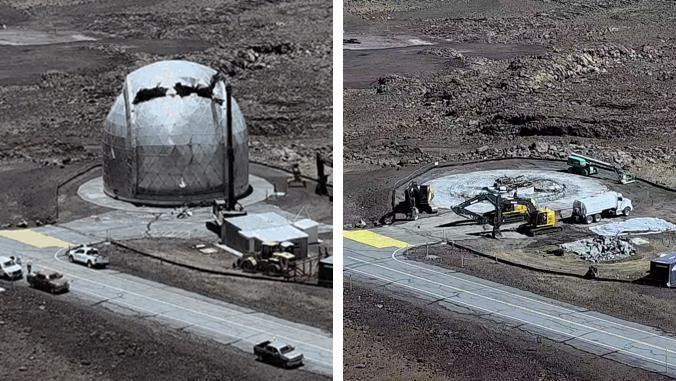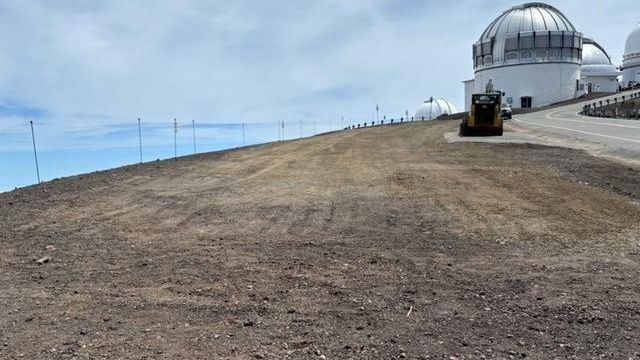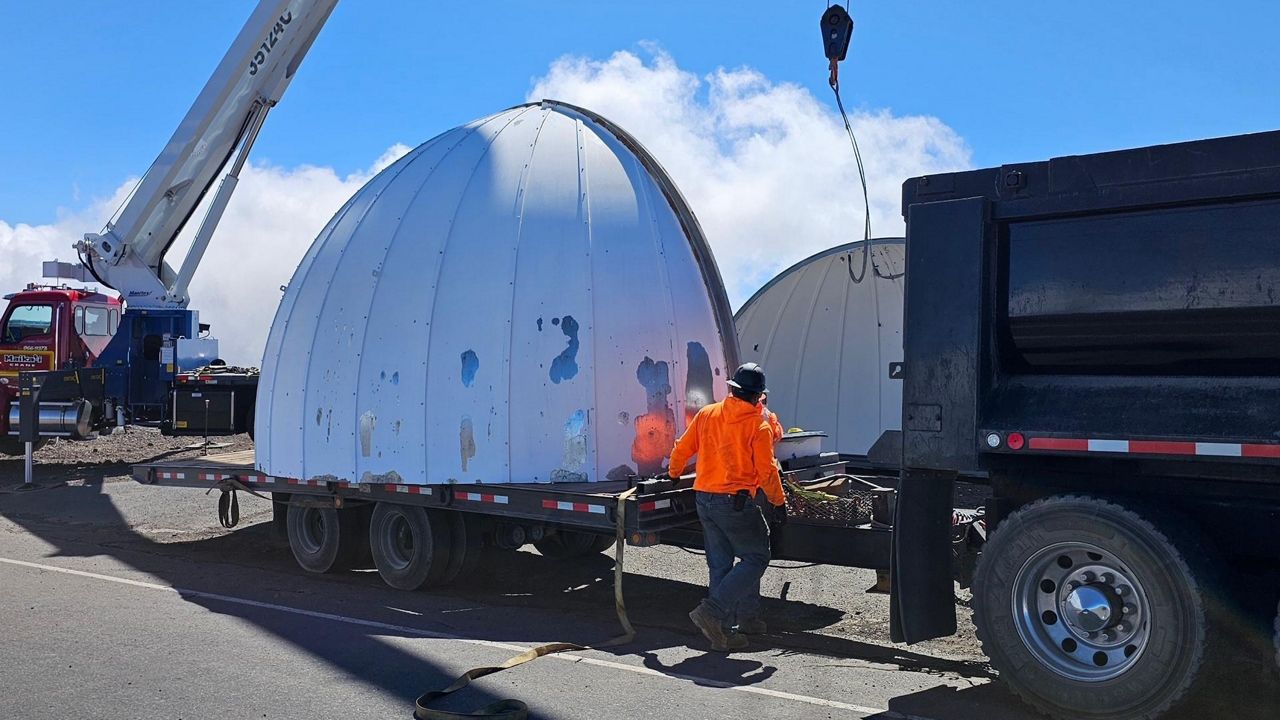MAUNAKEA, Hawaii — The first telescope on the summit of Maunakea was removed in May 2024.
Decommissioning the University of Hawaii at Hilo’s Hōkū Keʻa Observatory was a requirement of the Mauna Kea Comprehensive Management Plan. The decommission process, which started in April 2024, included removing the observatory building, generator building, telecommunications and electrical infrastructure, and the restoration of the site.
The entire process cost about $1 million, according to a news release.
UH Hilo’s Center for Maunakea Stewardship will monitor the restored site over the next three years to monitor species' population and diversity.
“Maunakea warrants the highest levels of stewardship, and we remain steadfast in our collaborative efforts to honor and protect the cultural and environmental significance of this ʻāina,” said UH Hilo Chancellor Bonnie Irwin in a statement. “The removal of Hōkū Keʻa reflects the university’s ongoing pledge to reduce the presence of telescopes on Maunakea.”

The U.S. Air Force built the Hōkū Keʻa Observatory in 1968, and it was one of the first observatories in Maunakea’s 528-acre astronomy precinct. UH Hilo took over the observatory in 2003. In April 2023, the Hawaii Board of Land and Natural Resources approved an application submitted by the Center for Maunakea Stewardship to decommission the Hōkū Keʻa Observatory.
As required by the Comprehensive Management Plan, the decommissioning of the California Institute of Technology Submillimeter Observatory on the summit of Maunakea began in Aug. 2023. The telescope dome has been removed and the next phase involves removing the concrete foundations, pavement, underground utilities and cesspool.
The $4 million deconstruction and restoration of the site is expected to be completed by the end of the year.

The state granted UH a 65-year lease in 1968 to operate the Maunakea Science Reserve. Protests by Native Hawaiians and environmentalists in 2015 against the building of the Thirty Meter Telescope brought attention to concerns that Maunakea was not being properly managed.
In Aug. 2020, the UH Board of Regents approved restructuring the internal management of UH-managed lands and created the Center for Maunakea Stewardship. The UH Board of Regents reaffirmed the university’s plan in Aug. 2023 to decommission two telescopes before the new Maunakea Stewardship and Oversight Authority takes over management of Maunakea by July 1, 2028. UH is working with MKSOA to transfer its leases, conservation district use permits, and an easement for lands on Maunakea.
While decommissioning Hōkū Keʻa Observatory, prayers and Native Hawaiian protocol opened and closed each work day.
“The process to remove Hōkū Keʻa and CSO is being done in a way that is pono to this special place as the construction crews received training on Maunakea’s history, cultural significance, environmental and cultural resources, and health and safety,” said CMS Executive Director Greg Chun in a statement. “A ceremony was conducted prior to the deconstruction phase and will be conducted again at the projectʻs conclusion and restoration phase.”
Six dump trucks and nine trailer loads were used to remove the debris from the decommissioned telescope. Fill that has been stored at the summit since the construction of the telescopes was used to restore the site.

According to the Center for Maunakea Stewardship, UH has committed to the removal of five telescopes on Maunakea by the time TMT is operational. UH said the other three telescopes will be identified at a later date. The university said it will not build any new sites on the summit of Maunakea except for TMT.
UH plans to build a teaching telescope, in coordination with MKSOA and DLNR, on already developed land at Hale Pōhaku, which is below the summit of Maunakea.
Michelle Broder Van Dyke covers the Hawaiian Islands for Spectrum News Hawaii. Email her at michelle.brodervandyke@charter.com.





